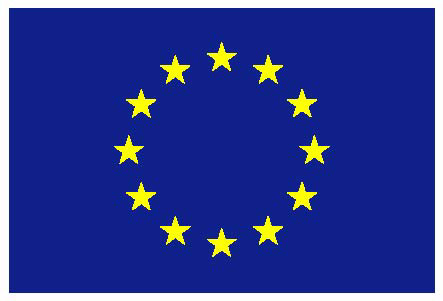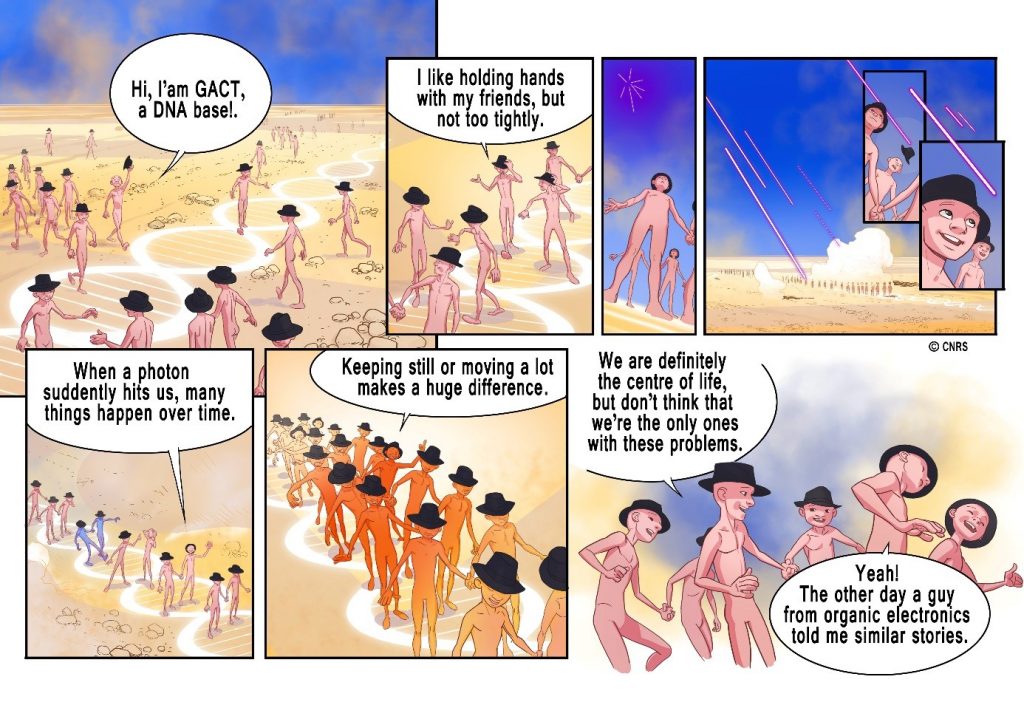L’ADN comme plate-forme d’entraînement pour les processus photodynamiques dans les matériaux mous
L’interaction de la lumière avec les biomatériaux est le mécanisme moteur de processus biologiques fondamentaux, de la photosynthèse à la photodétérioration de l’ADN, et constitue un outil puissant en biomédecine à des fins analytiques, diagnostiques et thérapeutiques.
L’objectif principal de LightDyNAmics est de parvenir à une compréhension complète des processus dynamiques ultrarapides à l’échelle moléculaire induits par l’absorption de la lumière UV dans l’ADN, et de dévoiler les mécanismes conduisant à la photodétérioration du code génétique.


The cartoon characters are named GACT, from the initials of the four DNA bases: Guanine, Adenine, Cytosine and Thymine. GACTs give hands (associate via hydrogen bonds) to form double helices. But even when interconnected, GACTs remain able to perform weak movements, as happens with molecules in soft matter. Upon absorption of UV radiation by DNA (when a photon hits GACTs) the light energy triggers a series of processes which may lead to chemical reactions damaging the DNA; for example, two bases may stuck together (two GACTS become blue) or a GACT may lose an electron, represented by a hat. The processes preceding such reactions strongly depend on the local motions, as is the case of organic materials used in the field of molecular electronics.

